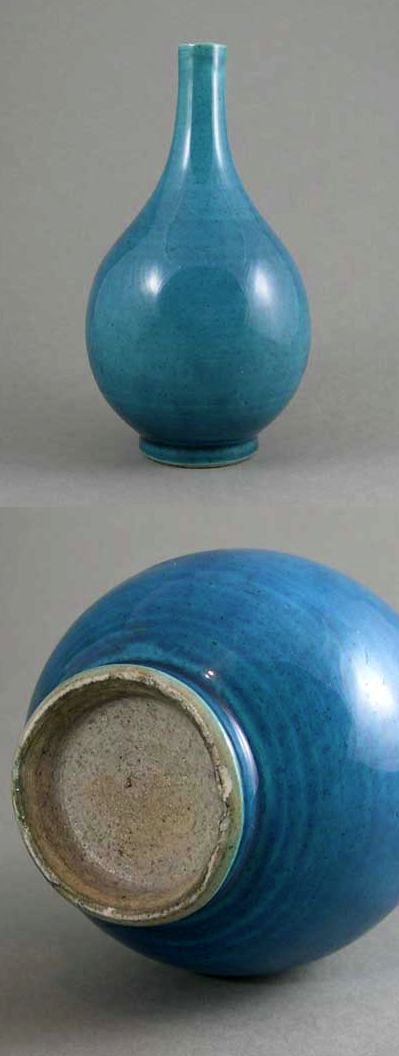
Turquoise monochrome glaze on porcelain, Qing dynasty.
Also called peacock-green or peacock-blue, sometimes with fish roe crackle.
The turquoise glaze owes its color to copper oxide in an alkaline glaze mix.
Turquoise glaze goes back a long time in Chinese ceramics, and at least as early as the Tang dynasty. The interest seems to have been shared with Middle Easter potters but the methods they used to arrive at similar results was different. The technology also differed depending on what material the glaze were to be applied on to.
Turquoise appears intermittently on porcelain from as early as the Yuan period. One of the most well known examples from the Ming period is the large stoneware guan (wine jar), dated to the 15th century, illustrated by R. E. Scott, Imperial Taste: Chinese Ceramics from the Percival David Foundation, 1989, no. 36.
One of the curiosities of the ways that Chinese potters used the material was that saltpeter was often used totally unfitted, although it is essentially a soluble material. The saltpeter was simply mixed with quartz and water (and sometimes with lead oxides or carbonates) to make low-temperature glazes.
After analyzing a late 19th century raw turquoise glaze used at Jingdezhen, the great French ceramic chemist Georges Vogt wrote in 1900:
'The simplicity with which the Chinese prepare this turquoise ... is truly remarkable. Nothing in its composition needs to be melted, or to be fitted. The only preparation needed is to grind together the saltpeter, the quartz and the copper powder in suitable proportions and it is ready to be used on porcelain vases.'
A